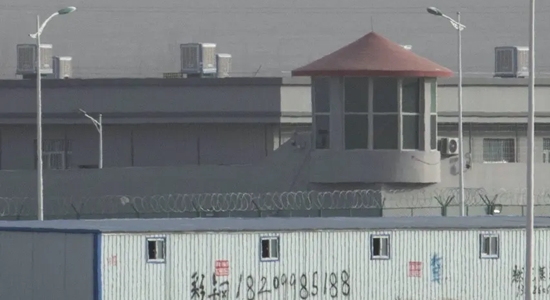
Several years ago, researchers used satellite-captured images to expose claims by the Chinese Communist Party that reeducation camps or prisons in the Xinjiang region for Uyghur inmates had been shut down. This CCP lie came on the heels of other lies that such facilities didn’t exist or were mere vocational training centers.
According to the RAND Corporation’s 2021 report:
Satellite data…show bright-lit compounds in the desert dark, wall after wall of barbed wire, and a sudden rush to build what appear to be fortified preschools.
The facilities that slowed down [as indicated be a decrease in lighting evident in satellite images] seemed to be mostly lower-security re-education sites. Those that grew looked more like prisons, with high walls spiked with barbed wire. That may indicate that China’s approach shifted in 2019 and 2020, from the short-term detention and re-education of Uyghur people to long-term incarceration.
Only 51 of the facilities showed the kind of significant lighting decline that could indicate a closure. But when researchers looked at satellite photos of those sites, they found evidence that most were still active. There were cars in the parking lots, people standing outside, walkways plowed of snow. Despite Chinese assurances that the camps had closed, the researchers concluded that only 11 of them—3 percent of the total they examined—showed any real signs of closure by mid-2020.
“The data is so granular that you can see, down to a city block, how bright the lights are, and how that changes, every month,” said Sean Mann, a policy analyst at RAND who specializes in data science. “Even in urban areas, we could identify these lighting signatures that showed us where they were establishing camps, where they were expanding them, and when they really decommissioned them.”
The incarcerations have been part of a more general campaign against the Uyghurs and their usually Muslim culture that was underway by 2016. In addition to dictates against long beards, Muslim names, owning a Quran and the like, the Chinese government instituted a saturating surveillance system in Xinjiang that would be a model for the rest of China and for other repressive governments.
Also see:
RAND Corporation: “China’s Disappeared Uyghurs: What Satellite Images Reveal”
Tearline.mil: “Investigating the Growth of Detention Facilities in Xinjiang Using Nighttime Lighting”
New York Times: “ ‘Absolutely No Mercy’: Leaked Files Expose How China Organized Mass Detentions of Muslims”
Human Rights Watch: “How Mass Surveillance Works in Xinjiang”
“The police platform targets 36 types of people for data collection. Those include people who have stopped using smart phones, those who fail to ‘socialize with neighbors,’ and those who ‘collected money or materials for mosques with enthusiasm.’ ”
Human Rights Watch: China’s Algorithms of Repression: Reverse Engineering a Xinjiang Police Mass Surveillance App











